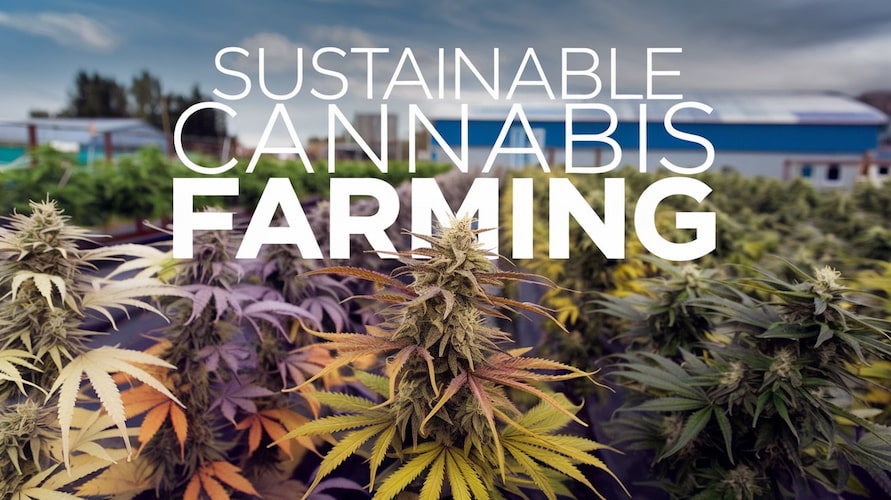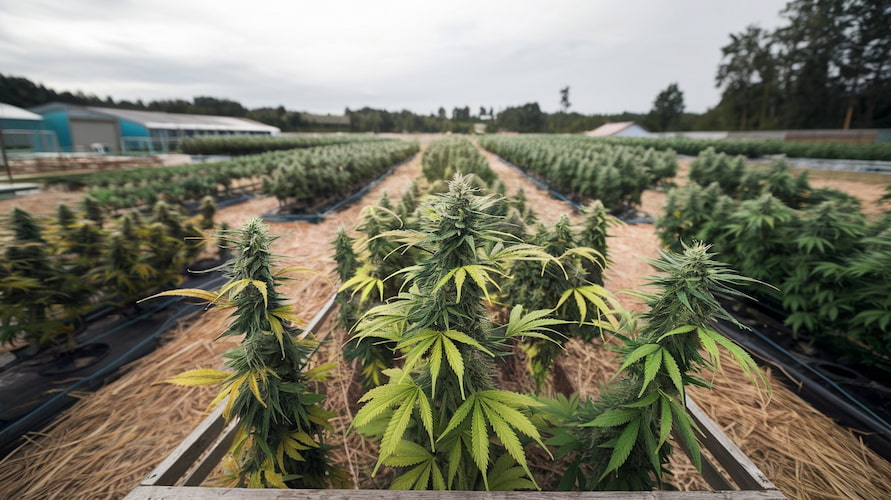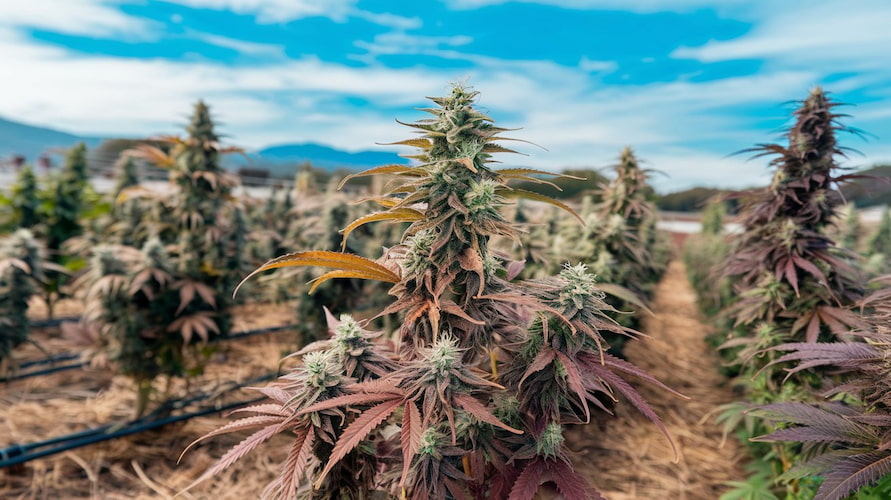Eco-Friendly Cannabis: Sustainable Farming Practices

As the global cannabis industry continues to grow, so does the importance of sustainable farming practices. Traditional agricultural methods often contribute to environmental degradation, including soil erosion, water scarcity, and biodiversity loss. Cannabis, being a resource-intensive crop when grown improperly, can exacerbate these problems. However, with conscientious techniques, cultivators can reduce their environmental footprint and promote a greener, healthier planet.
In this blog post, we’ll explore the top sustainable cannabis farming techniques, their benefits, and how growers can implement them effectively.
Key Takeaways
- Implementing organic cultivation and regenerative agriculture practices significantly improves soil health, biodiversity, and environmental resilience.
- Water conservation strategies and energy-efficient technologies are essential for reducing the environmental impact of cannabis farming operations.
- Community engagement, transparency, and embracing future innovations ensure a sustainable and socially responsible cannabis industry.
Organic Cultivation
What Is Organic Cannabis Farming?
Organic farming eliminates the use of synthetic fertilizers, pesticides, herbicides, and genetically modified organisms (GMOs). Instead, it relies on natural processes to enhance soil fertility and pest control. These methods work harmoniously with nature to support plant health and environmental stability.
Benefits
Healthier soil is achieved by encouraging rich microbial life, which in turn supports plant vitality. Organic farming results in a cleaner final product by reducing chemical residues, thus providing a safer option for consumers. Moreover, it protects the environment by minimizing chemical runoff into nearby waterways and surrounding ecosystems.
Techniques
Growers can use compost and natural amendments such as worm castings, kelp, and bone meal to enrich the soil. Employing cover crops like clover can fix nitrogen naturally, improving soil fertility without synthetic fertilizers. Rotating crops further maintains soil health by breaking pest and disease cycles.
Regenerative Agriculture
What Is Regenerative Farming?
Regenerative agriculture goes a step beyond sustainability. It actively seeks to restore and enhance farm ecosystems, focusing on rebuilding organic matter and restoring degraded soil biodiversity.
Benefits
Enhanced soil health is achieved through carbon sequestration, helping mitigate climate change. Increased biodiversity is another significant benefit, as it supports a broader range of microorganisms, insects, and plants, creating a resilient farming ecosystem. These factors lead to more robust crops that can better resist pests, diseases, and climate fluctuations.
Techniques
Practices like no-till farming preserve soil structure and prevent erosion. Integrating livestock provides natural fertilization and promotes nutrient cycling. Diversifying crops and planting perennial species help build a resilient and dynamic farm environment.
Water Conservation Strategies
Importance
Water is a critical resource for cannabis cultivation. Inefficient water usage not only wastes resources but also impacts local water tables and ecosystems, particularly in drought-prone areas.
Techniques
Drip irrigation systems precisely deliver water to plant roots, minimizing evaporation. Rainwater harvesting allows growers to collect and store rainwater, reducing reliance on municipal or groundwater supplies. Mulching with organic materials like straw or wood chips reduces evaporation and helps maintain soil moisture levels. Watering plants during cooler parts of the day, such as early morning or late evening, further minimizes water loss.
Integrated Pest Management (IPM)
What Is IPM?
Integrated Pest Management (IPM) is a strategic approach that combines biological, cultural, physical, and minimal chemical tools to manage pests in an environmentally sensitive manner.
Benefits
This approach significantly reduces pesticide use, lowering chemical exposure for both plants and farmworkers. It also promotes sustainable, long-term pest control, minimizing the risk of pests developing resistance.
Techniques
Introducing beneficial insects like ladybugs and predatory mites helps control pest populations naturally. Physical barriers such as row covers protect crops without chemicals. Organic pesticides, derived from natural sources, are used sparingly and only as a last resort.
Energy Efficiency
Importance
Indoor cannabis cultivation can be energy-intensive, primarily due to lighting, climate control, and ventilation needs. Improving energy efficiency reduces operational costs and the carbon footprint of production.
Techniques
LED lighting technology offers higher efficiency and longer lifespans compared to traditional high-pressure sodium (HPS) lights. Solar panels can be installed to harness renewable energy, reducing reliance on fossil fuels. Energy-efficient HVAC systems optimize climate control with less energy use. Smart automation systems manage resource usage with precision, further cutting down waste.
Soil Health and Management
Importance
Healthy soil is fundamental to sustainable cannabis farming. It supports plant growth, enhances water retention, and fosters a vibrant microbial community crucial for nutrient cycling.
Techniques
Regular soil testing allows growers to monitor and adjust nutrient levels and pH effectively. Incorporating organic matter, such as compost or biochar, enhances soil structure and fertility. Encouraging the development of fungal networks, like mycorrhizal fungi, boosts nutrient uptake and plant health.
Biodiversity and Companion Planting
Importance
Biodiversity enhances ecosystem resilience, supports pest control, and improves overall farm productivity.
Techniques
Companion planting involves growing specific plants alongside cannabis to deter pests and promote growth. Plants like basil, marigold, and dill naturally repel harmful insects. Creating pollinator gardens attracts bees and butterflies, boosting pollination and biodiversity. Building habitats for birds and bats supports natural pest control by encouraging predator species.
Sustainable Genetics
Importance
Selecting cannabis strains that are naturally resilient reduces the need for chemical inputs and enhances farm sustainability.
Techniques
Growers should opt for strains bred for disease resistance and climate adaptability. Choosing fast-flowering strains can reduce the energy footprint of indoor cultivation. It is also important to source seeds from ethical breeders committed to sustainable practices.
Waste Reduction and Recycling
Importance
Cannabis farming generates organic and synthetic waste, and proper management of this waste is essential to minimize environmental impact.
Techniques
Composting organic waste, such as plant trimmings, transforms it into valuable soil amendments. Recycling programs for plastics and grow equipment can reduce landfill contributions. Using biodegradable pots and sustainable materials wherever possible further minimizes the ecological footprint.
Sustainable Packaging
Importance
As cannabis products reach consumers, sustainable packaging is crucial to maintaining an eco-friendly supply chain.
Techniques
Packaging made from recycled or renewable resources reduces environmental impact. Minimalist packaging designs use fewer materials, generating less waste. Brands can also promote recycling programs or offer incentives for customers to return packaging.
Outdoor vs. Indoor Cultivation
Outdoor Advantages
Outdoor cultivation harnesses natural sunlight, reducing the need for artificial lighting and significantly cutting energy costs. It has a lower carbon footprint since it relies less on intensive climate control. Additionally, outdoor farms can utilize natural water sources, such as rain, to meet some of their irrigation needs.
Indoor Considerations
While indoor cultivation offers greater control over growing conditions, it is energy-intensive. Growers must employ efficiency measures like renewable energy, LED lighting, and automated systems to mitigate their environmental impact.
Certification and Transparency
Importance
Certification assures consumers that cannabis products meet established sustainability and ethical standards. Transparency builds consumer trust and brand loyalty.
Certifications
Organic Certification confirms that products are grown without synthetic inputs. Sun+Earth Certification emphasizes regenerative farming, fair labor practices, and transparency. Clean Green Certification offers a cannabis-specific organic certification alternative, ensuring environmentally friendly cultivation.
Being open about farming practices and sustainability efforts strengthens a brand’s credibility and appeals to the increasingly eco-conscious consumer market.
Community Engagement
Importance
Sustainability extends to social responsibility. Supporting local communities enhances social equity and strengthens the cannabis industry’s reputation.
Techniques
Hiring locally and offering fair wages promote economic sustainability. Engaging in local initiatives and environmental programs strengthens community ties. Partnering with local environmental organizations demonstrates a commitment to broader sustainability goals.
Future Innovations in Sustainable Cannabis Farming
Technological Advances
Artificial intelligence and machine learning technologies are being used to optimize irrigation, nutrient delivery, and lighting schedules. Blockchain technology enhances supply chain transparency, enabling consumers to trace products back to sustainably farmed origins. Biodegradable sensors provide real-time soil health data without contributing to waste.
Biotechnological Advances
Research into microbial inoculants is improving soil health and plant resilience. Traditional breeding and genetic editing techniques are creating cannabis strains with enhanced disease resistance and environmental adaptability.
Conclusion: Building a Greener Cannabis Industry
The future of cannabis farming lies in sustainable practices that balance productivity with environmental stewardship. Organic cultivation, regenerative agriculture, water conservation, integrated pest management, energy efficiency, soil health, biodiversity, and waste reduction are critical pillars. Innovations in technology and genetics will continue to shape a greener future for the industry.
By adopting these sustainable techniques, growers not only contribute to the health of the planet but also build resilient operations that stand the test of time. In an increasingly conscious market, sustainability is no longer optional—it’s essential.
The road to sustainable cannabis farming is a continuous journey of learning, adapting, and improving. With commitment and innovation, the cannabis industry can set a shining example for sustainable agriculture worldwide.
FAQs
What is the most sustainable way to grow cannabis?
The most sustainable way to grow cannabis is through organic and regenerative agriculture practices. This involves using natural amendments, preserving soil health, conserving water, promoting biodiversity, and minimizing energy and chemical inputs.
How can cannabis farmers conserve water effectively?
Cannabis farmers can conserve water by using drip irrigation systems, collecting rainwater, applying mulch to retain soil moisture, and watering plants during cooler parts of the day to minimize evaporation.
Why is regenerative agriculture important for cannabis farming?
Regenerative agriculture is crucial because it not only sustains but actively restores ecosystems. It enhances soil health, sequesters carbon, increases biodiversity, and creates more resilient farming systems.
What are the benefits of using LED lights in cannabis cultivation?
LED lights are energy-efficient, have a longer lifespan, produce less heat, and offer customizable light spectrums that can be tailored to the plant’s growth stages, ultimately reducing energy costs and carbon footprint.
How does companion planting help cannabis farms?
Companion planting helps by naturally repelling pests, attracting beneficial insects, enhancing soil health, and reducing the need for chemical pesticides. This creates a more balanced and resilient farm ecosystem.
What certifications should sustainable cannabis farms pursue?
Sustainable cannabis farms should consider certifications such as Organic Certification, Sun+Earth Certification, and Clean Green Certification to validate their commitment to eco-friendly and ethical farming practices.
Ready to join the movement towards sustainable cannabis cultivation? Share your thoughts or questions in the comments below!
Suggested Articles
;)
;)
;)






 03 Jul 2025
03 Jul 2025  10 min read
10 min read


 April 28, 2025
April 28, 2025 


RESPONSES (0)
No responses yet. Be the first to respond!